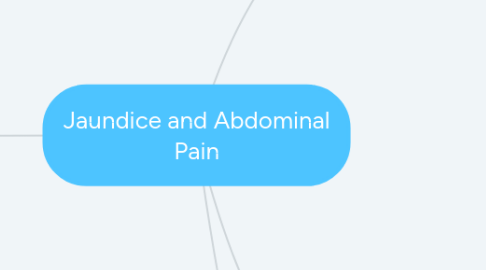
1. Possible Diagnoses
1.1. Cholestatic hepatitis
1.1.1. Fatigue, anorexia, nausea, pruritus, dark urine, pale stools, right upper quadrant pain, bloating, and jaundice.
1.1.1.1. This perfectly fits the symptoms the patient presented with. The practioner and myself did not think to ask about any changes in the color of that patient's stool but all other symptoms were present.
1.2. Cholangitis
1.2.1. Right upper quadrant pain, jaundice, nausea, vomiting, dark urine, light stools,lethargy, decreased level of consciousness,hypotension, fever, and chills.
1.2.1.1. The patient did not present as ill as a typical cholangitis patient would. Her blood pressure was stable and she denied fever and chills.
1.3. Chronic viral hepatitis B or C
1.3.1. Increased bleeding and bruising, fatigue, anorexia, pruritus, decreased appetite, jaundice, darkened urine, ascites, bilateral lower extremity edema, weight loss, decreased level of consciousness, confusion, slurred speech, and spider angiomas
1.3.1.1. The patient does exhibit many of these symptoms but doesn't have edema, spider angiomas, increased bruising, or any symptoms of hepatic encephalopathy. She also was recently screened, is in a monogamous marriage with her husband who was also screened, denies IV drug use, and has no tattoos.
1.4. Autoimmune induced hepatitis
1.4.1. Skin rashes, hepatomegaly, amenorrhea, joint pain, abdominal discomfort, jaundice,spider angiomas, and ascites.
1.4.1.1. The patient denied history of measles and epstein barr virus which can cause this later in life. Also she is still having regular periods and denies joint pain, skin rashes, and has no spider angiomas.
1.5. Malignancy of the pancreas
1.5.1. Jaundice, dark urine, light colored stool, abdominal pain (generally starting in the left upper quadrant), weight loss, fatigue, blood clots, and diabetes
1.5.1.1. Once again the patient did have many of these symptoms but this is more rare diagnosis than cholestasis and she did not have a history of blood clots, devlopment of diabetes, weight loss, and her pain was localized to the right upper quadrant.
1.6. Malignancy of the liver
1.6.1. Jaundice, dark urine, light colored stool, abdominal pain (generally starting in the right upper quadrant), weight loss, fatigue, spider angiomas, enlarged visible vessels on the abdomen, hepatomegaly, spleenomegaly, decreased appetite, nausea, vomiting, and pruritus.
1.6.1.1. The prevalence of liver cancer is even lower than pancreatic cancer making this diagnosis less likely. She also doesn't have a history of exposure to many of the carcinogens that cause liver cancer such as alcohol. Her spleen was not palpable, she had no spider angiomas, visible vessels on her abdomen, or weight loss.
2. Key negatives: Denies alcohol and acetaminophen use. No history of autoimmune disease, measles, and epstein barr virus. Negative screening for hepatitis B and C during immigration, no IV drug use, or tattoos. No spleenomegaly detected during palpation. No signs or symptoms of encephalopathy. She also denies any fever or weight loss.
3. VINDICATE
3.1. Vascular
3.1.1. Hemophilia
3.1.2. Hemolytic anemia
3.2. Infection/inflammation
3.2.1. Cholangitis
3.2.2. Malaria
3.2.3. Sepsis
3.2.4. Pancreatitis
3.3. Neoplasms
3.3.1. Hepatic metastases
3.3.2. Malignancy of the liver
3.3.3. Malignancy of the pancreas
3.4. Drugs/degeneration
3.4.1. Alcohol
3.4.2. Acetaminophen
3.4.3. Statins
3.4.4. Isoniazid
3.4.5. Augmentin
3.4.6. Contraceptives
3.5. Iatrogenic/idiopathic
3.5.1. Postoperative strictures
3.5.2. Pancreatitis induced by ERCP
3.6. Congenital
3.6.1. Crigler-Najjar syndrome
3.6.2. Gilbert syndrome
3.6.3. Dubin-Johnson syndrome
3.6.4. Rotor syndrome
3.6.5. Progressive familial intrahepatic cholestasis
3.7. Allergy/autoimune/anatomic
3.7.1. Autoimmune induced hepatitis
3.7.2. Immunoallegic hepatitis
3.7.3. Blockage of the biliary ducts
3.8. Trauma
3.8.1. Any trauma to the liver
3.8.2. Large hematoma re-absorption
3.9. Endocrine/environmental
3.9.1. Hyperthyroidism
3.9.2. Professional toxic hepatitis

